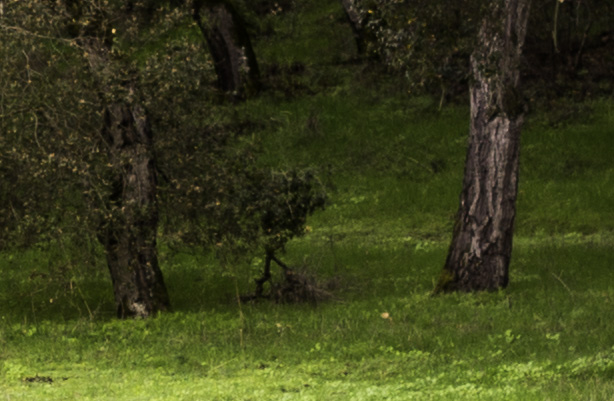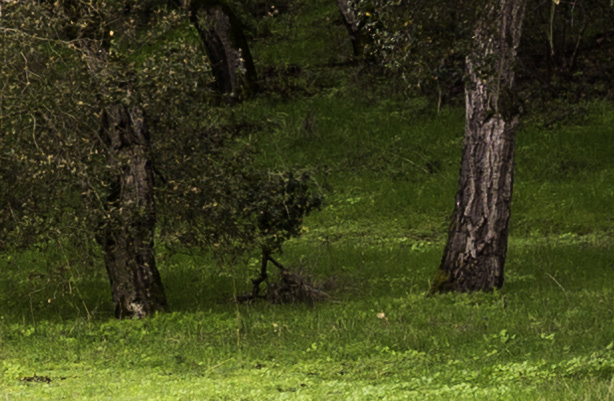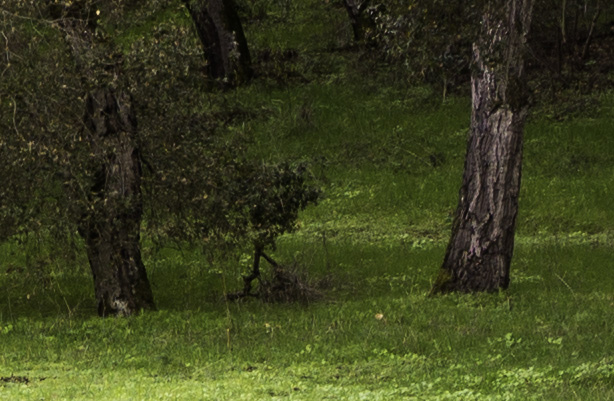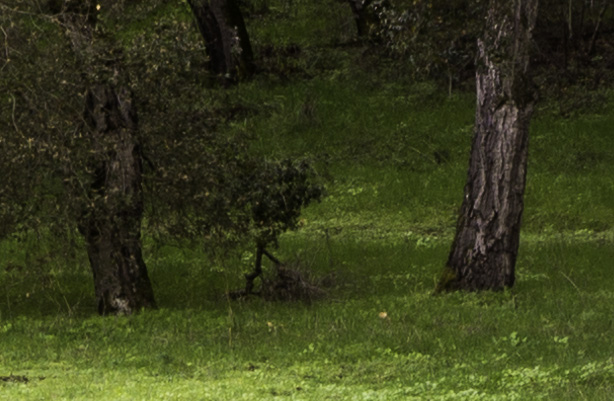Here is my usual low-contrast distant subject test scene as seen by the RX-1:
I did a series of tests with both the RX-1 and the NEX-7/24mm f/1.8 at f/2, f/2.8, f/4, f/5.6, f/8, and f/11. I looked at the center part of the image first.
I’m putting up 1:1 jpegs, but the best way for you to look at the images is to download this file, which unzips to a .psd (Photoshop format ) file with 12 layers. The top six are the NEX-7 images, with numerically increasing f-stops from top to bottom. The bottom six are the RX-1 images, with numerically increasing f-stops from top to bottom. You can choose whatever magnification you want, and compare whatever layers you want by clicking on the eyeball icons.
At f/2, there’s not much difference, but I’d give the nod to the RX-1:
RX-1 f/2
NEX-7 f/2
There’s a substantial improvement in both cameras at f/2.8, with the RX-1 picking up a lot of microcontrast:
RX-1 f/2.8
NEX-7 f/2.8
The NEX-7 continues to improve at f/4, but the RX-1 is about the same. I’d call the NEX-7 the winner here, but it’s close:
RX-1 f/4
NEX-7 f/4
The NEX-7 loses a little contrast at f/5.6, and the RX-1 gains a bit, leaving the RX-1 slightly ahead:
RX-1 f/5.6
NEX-7 f/5.6
Diffraction takes its toll on both cameras at f/8, with the NEX-7 suffering a bit more:
RX-1 f/8
NEX-7 f/8
The NEX-7 is much worse at f/11 than at f/8, with the RX-1 suffering less. The RX-1 image is not bad at all. This resistance to diffraction softening is a consequence of the larger sensor size:
RX-1 f/11
NEX-7 f/11
Except for the diffraction limited performance at f/11, these images are pretty close in quality:













There is this issue about comparing f/2 to f/2 between a FF sensor and crop sensor. With the FF sensor the RX1 f/2 lens is actually something like a f/1.4. crop equivalent I think the more fair comparison would be to see the 24mm at 1.8 (which we know to be fairly soft) vs. the RX 1 at 2.8 (which we know is already pretty stout). What you have going on here from a comparison standpoint seems a bit misleading to me.
Tommy, I can see why you want to handicap things by sensor size. However, I don’t think that’s the tradeoff the average photographer makes. I consider what I have to pay for a camera, size and weight, and performance. I understand that performance can include dof which is influenced by sensor size, even after we’ve normalized for angle of view like we have in the present comparison, but I think that’s a second order effect. If I started normalizing f-stops by sensor size, I’d have to somehow compensate by normalizing ISO, and that’s a rabbit hole I don’t want to go down.
Do you have a fully-developed way to compare cameras with different sensor sizes? Or are you thinking we shouldn’t do that?
Thanks,
Jim